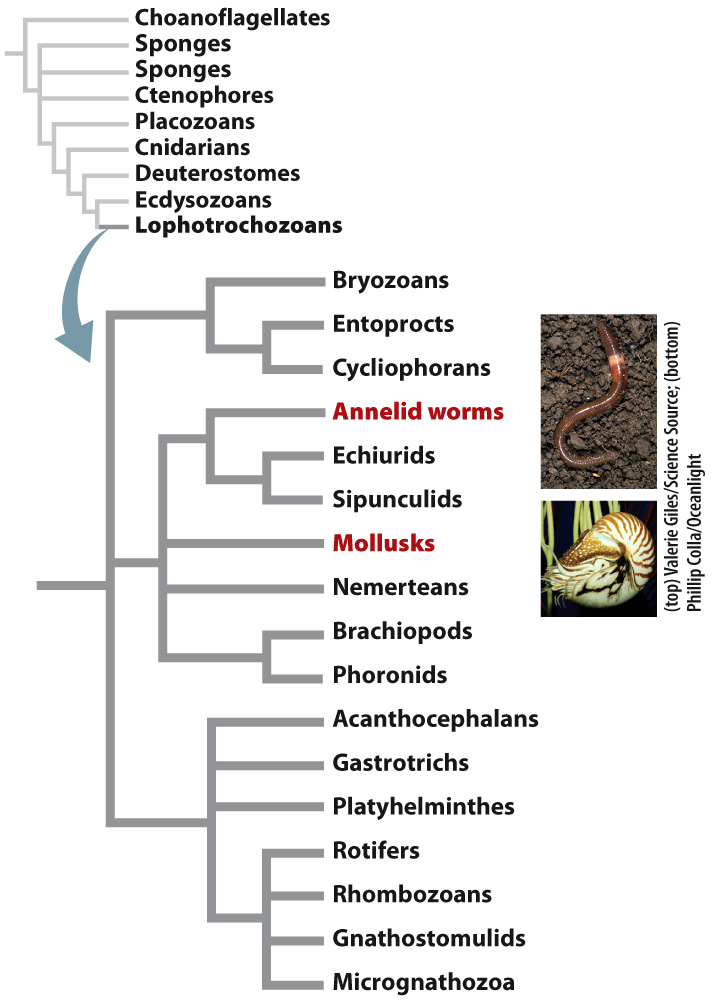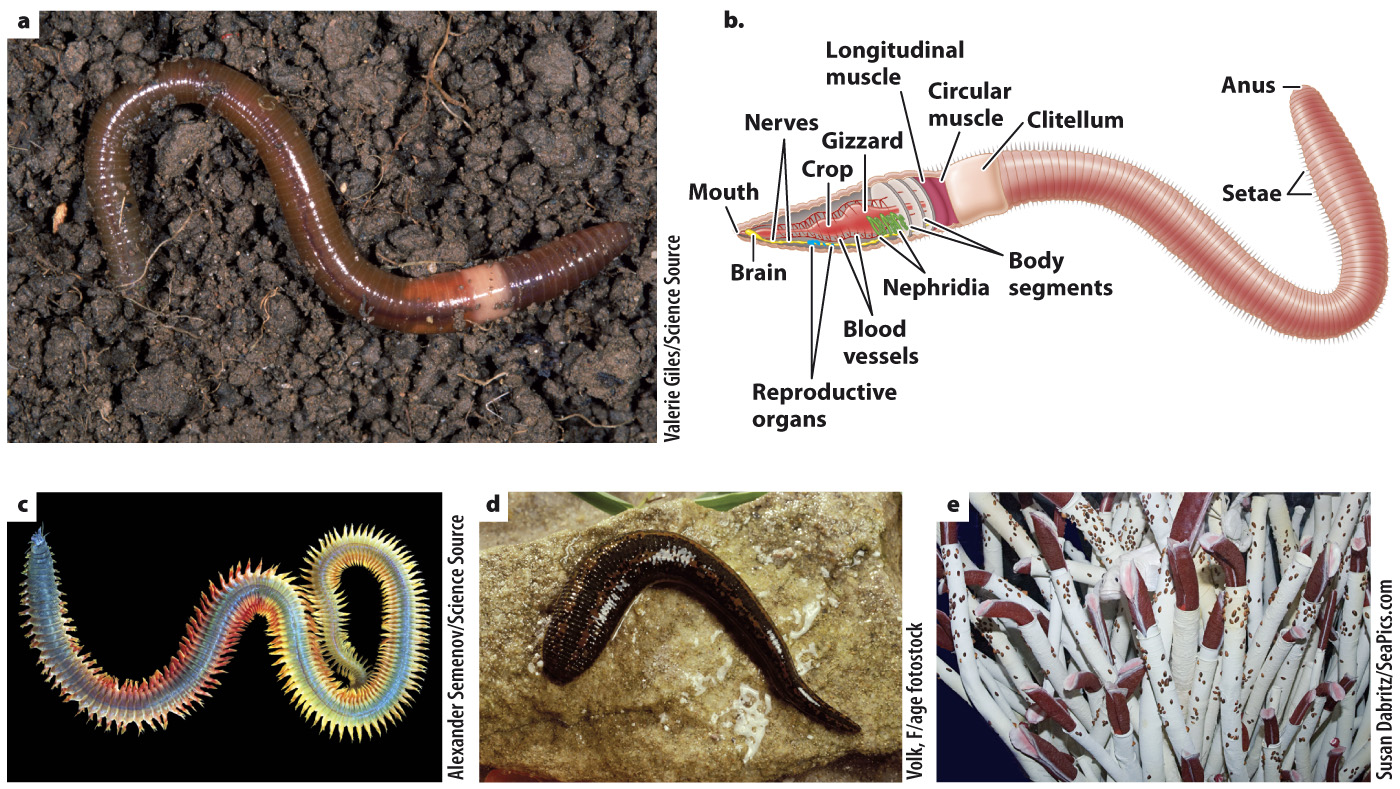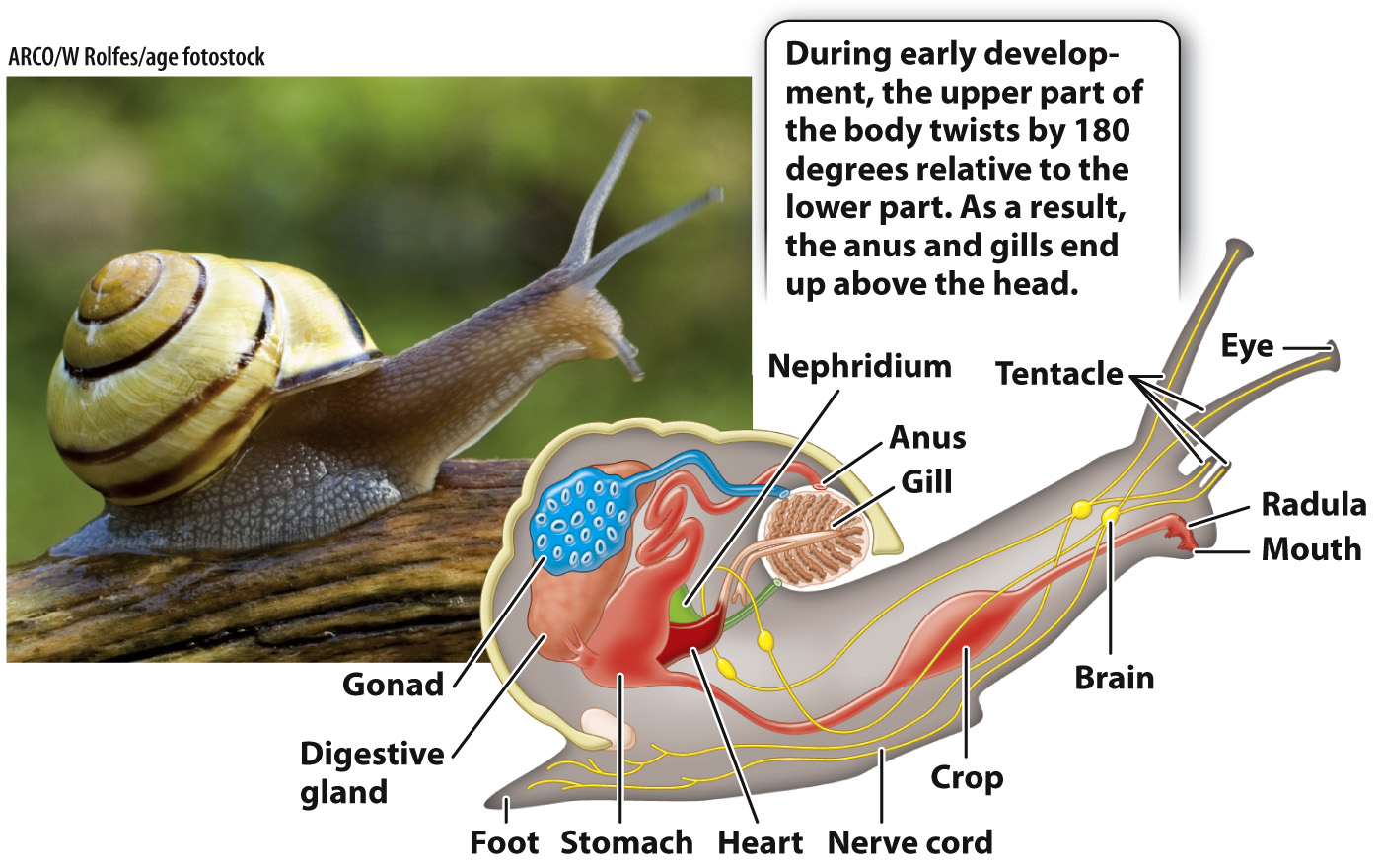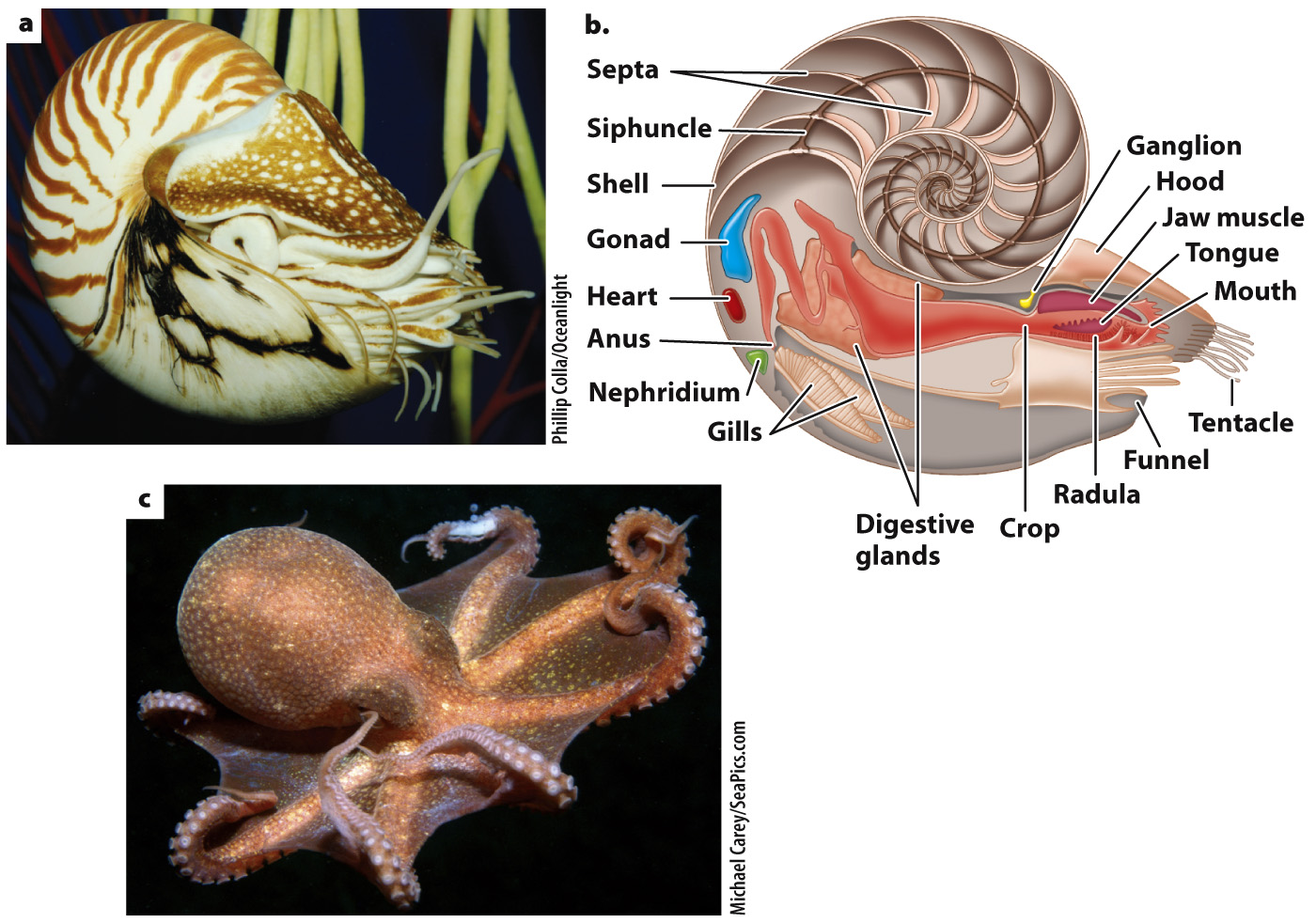Lophotrochozoans make up nearly half of all animal phyla, including the diverse and ecologically important annelids and mollusks.

The Lophotrochozoa are a group of animals first recognized on the basis of unique molecular characters and now known to include several very different types of animal. On the one hand, there are the brachiopods, bryozoans, and related phyla that have a tentacle-
The Lophotrochozoa contain 17 phyla, mostly small marine animals of limited diversity, but also the diverse and ecologically important annelid worms and mollusks (Fig. 44.15). We’ll focus on these two phyla, which are closely related but which have nonetheless evolved along quite different anatomical trajectories in the half billion years since their origins.
The annelids most familiar to us are the earthworms, which, as their name suggests, are commonly found in soil (Fig. 44.16a and 44.16b). Most of the 15,000 known annelid species, however, live in the oceans (Fig. 44.16c). All annelids have a cylindrical body with distinct segments, and they illustrate the advantages of a bilaterian body plan. At one end, the head has a well-

Aquatic annelids have gill-
Many annelids are predators that capture and ingest prey, but some, like earthworms, ingest sediment, digesting the organic matter it contains and excreting mineral particles. A few marine annelids have evolved tentacles that enable them to filter food particles from water, while leeches, a specialized group of freshwater annelids, attach themselves to vertebrates to suck out a meal of blood (Fig. 44.16d). And, remarkably, the meter-
Mollusks are the second major phylum of the Lophotrochozoa, and include such familiar groups as snails, clams, mussels, squids, and octopuses. Mollusks are distinguished from other lophotrochozoans by a unique structure called the mantle that plays a major role in breathing and excretion, and which forms their shells (when shells are present). The mantle lines the visible body of a squid as well as what we commonly but mistakenly view as the head of an octopus. Mollusks also develop a distinctive larva called a trochophore that has a tuft of cilia at its top and additional cilia bands around its middle. Marine annelids develop from trochophores as well, and the presence of this unique form of larva in both phyla suggests a close evolutionary relationship between the two. This hypothesis is supported by molecular sequence comparisons. Nonetheless, mollusks and annelids share very few features of the adult body plan. More than 80,000 species of mollusks have been described, most of them gastropods.
Gastropods—snails and slugs—

Some gastropods eat algae, but many are predators. About half occur in the ocean, and the other half are freshwater and terrestrial species that primarily feed on plants. In land snails and slugs, the only terrestrial mollusks, the gills have been lost, and gas exchange occurs in an internal cavity that has been modified to function as a lung.
The second great class of mollusks is the cephalopods—about 700 species of squid, cuttlefish, octopus, and the chambered nautilus (Fig. 44.18). Cephalopods share a number of features with gastropods, including much of the internal anatomy, featherlike gills, and mantle. But they also have distinctive adaptations for their unique modes of life. Most obviously, cephalopods have muscular tentacles that capture prey and sense the environment. These leglike appendages are found on the head region rather than on the sides of the body as in other animals.

Cephalopods are superb swimmers, able to dart through the water by means of a jet propulsion system that forces water through mantle tissue that is fused to form a siphon. It is the combination of tentacles and rapid locomotion that makes cephalopods important predators in the oceans. Moreover, cephalopods have exceptional eyesight and exhibit the most complex behavior of any invertebrate animals: They are able to learn visual patterns and solve puzzles to gain food. The chambered nautilus secretes a coiled shell of calcium carbonate (Figs. 44.18a and 44.18b), but in other cephalopods, like squid and octopus, the shell is reduced or absent (Fig. 44.18c). In oceans of the Mesozoic Era (252–
A third major group of mollusks, the bivalves, includes the familiar clams, oysters, and mussels. Once again, these animals have anatomical features that point to their close relationship to snails and squids, but also have distinctive features that set them apart (Fig. 44.19). Notably, bivalves have (literally) lost their heads. As their name implies, bivalves have evolved a skeleton in which two hard shells called valves are connected by a flexible hinge.

Most bivalves obtain food by filtering particles from seawater. However, many bivalves live within marine sediments, burrowing into sand or mud with their muscular foot. How can bivalves filter seawater within the sediment? Once again, this group of mollusks has a modified mantle that allows a new function. Flaps of mantle tissue have fused to form a pair of siphons that extend upward from the bivalve’s body to the surface of the seafloor above it. One siphon draws water containing food and oxygen into the body. The second siphon then returns water and waste materials to the environment. About 2000 species of bivalves have been described, mostly from the oceans, but also many from fresh water. Bivalves include the longest-
Quick Check 3 From the shared traits of present-
Quick Check 3 Answer
The shared features among present-